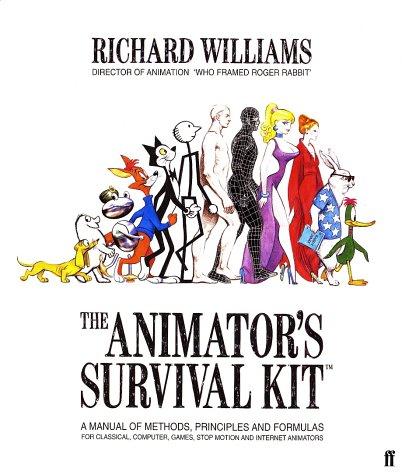
Perry J·Kaufman《Trading Systems and Methods, + Website》
书刊介绍
内容简介
The ultimate guide to trading systems, fully revised and updated For nearly thirty years, professional and individual traders have turned to Trading Systems and Methods for detailed information on indicators, programs, algorithms, and systems, and now this fully revised Fifth Edition updates coverage for today's markets. The definitive reference on trading systems, the book explains the tools and techniques of successful trading to help traders develop a program that meets their own unique needs. Presenting an analytical framework for comparing systematic methods and techniques, this new edition offers expanded coverage in nearly all areas, including trends, momentum, arbitrage, integration of fundamental statistics, and risk management. Comprehensive and in-depth, the book describes each technique and how it can be used to a trader's advantage, and shows similarities and variations that may serve as valuable alternatives. The book also walks readers through basic mathematical and statistical concepts of trading system design and methodology, such as how much data to use, how to create an index, risk measurements, and more. Packed with examples, this thoroughly revised and updated Fifth Edition covers more systems, more methods, and more risk analysis techniques than ever before. The ultimate guide to trading system design and methods, newly revised Includes expanded coverage of trading techniques, arbitrage, statistical tools, and risk management models Written by acclaimed expert Perry J. Kaufman Features spreadsheets and TradeStation programs for a more extensive and interactive learning experience Provides readers with access to a companion website loaded with supplemental materials Written by a global leader in the trading field, Trading Systems and Methods, Fifth Edition is the essential reference to trading system design and methods updated for a post-crisis trading environment.
作品目录
Preface to the Fifth Edition xv
CHAPTER 1 Introduction 1
The Expanding Role of Technical Analysis 1
Convergence of Trading Styles in Stocks and Futures 2
A Line in the Sand between Fundamentals and Technical Analysis 4
Professional and Amateur 5
Random Walk 6
Deciding on a Trading Style 8
Measuring Noise 10
Maturing Markets and Globalization 14
Background Material 16
Research Guidelines 18
Objectives of This Book 19
Profile of a Trading System 20
A Word about the Notation Used in This Book 23
And Finally . . . 23
CHAPTER 2 Basic Concepts and Calculations 25
About Data and Averaging 26
On Average 30
Price Distribution 33
Moments of the Distribution: Variance, Skewness, and Kurtosis 37
Standardizing Risk and Return 48
The Index 54
Standard Measurements of Performance 58
Probability 59
Supply and Demand 66
CHAPTER 3 Charting 79
Finding Consistent Patterns 80
What Causes the Major Price Moves and Trends? 82
The Bar Chart and Its Interpretation by Charles Dow 83
Chart Formations 92
Trendlines 94
One-Day Patterns 102
Continuation Patterns 113
Basic Concepts in Chart Trading 117
Accumulation and Distribution—Bottoms and Tops 118
Episodic Patterns 132
Price Objectives for Bar Charting 133
Implied Strategies in Candlestick Charts 139
Practical Use of the Bar Chart 144
Evolution in Price Patterns 148
CHAPTER 4 Charting Systems and Techniques 151
Dunnigan and the Thrust Method 152
Nofri’s Congestion-Phase System 155
Outside Days with an Outside Close 157
Inside Days 158
Pivot Points 158
Action and Reaction 159
Channel Breakout 167
Moving Channels 170
Commodity Channel Index 171
Wyckoff’s Combined Techniques 172
Complex Patterns 173
A Study of Charting Patterns 176
Bulkowski’s Chart Pattern Rankings 178
CHAPTER 5 Event-Driven Trends 181
Swing Trading 182
Constructing a Swing Chart Using a Swing Filter 184
Point-and-Figure Charting 195
The N-Day Breakout 222
CHAPTER 6 Regression Analysis 235
Components of a Time Series 235
Characteristics of the Price Data 236
Linear Regression 238
Linear Correlation 248
Nonlinear Approximations for Two Variables 252
Transforming Nonlinear to Linear 256
Evaluation of Two-Variable Techniques 257
Multivariate Approximations 259
ARIMA 267
Basic Trading Signals Using a Linear Regression Model 273
Measuring Market Strength 276
CHAPTER 7 Time-Based Trend Calculations 279
Forecasting and Following 279
Price Change over Time 284
The Moving Average 284
Geometric Moving Average 292
Accumulative Average 293
Reset Accumulative Average 293
Drop-Off Effect 293
Exponential Smoothing 293
Plotting Lags and Leads 307
CHAPTER 8 Trend Systems 309
Why Trend Systems Work 309
Basic Buy and Sell Signals 314
Bands and Channels 320
Applications of a Single Trend 330
Comparison of Major Trend Systems 336
Techniques Using Two Trendlines 350
Multiple Trends and Common Sense 356
Comprehensive Studies 359
Selecting the Right Trend Method and Speed 359
Moving Average Sequences: Signal Progression 363
Early Exits from a Trend 366
Moving Average Projected Crossovers 366
CHAPTER 9 Momentum and Oscillators 369
Momentum 370
Divergence Index 384
Oscillators 385
Double-Smoothed Momentum 404
Velocity and Acceleration 412
Hybrid Momentum Techniques 416
Momentum Divergence 418
Some Final Comments on Momentum 426
CHAPTER 10 Seasonality and Calendar Patterns 427
A Consistent Factor 428
The Seasonal Pattern 429
Popular Methods for Calculating Seasonality 430
Seasonal Filters 456
Seasonality and the Stock Market 478
Common Sense and Seasonality 483
CHAPTER 11 Cycle Analysis 485
Cycle Basics 485
Uncovering the Cycle 494
Maximum Entropy 514
Cycle Channel Index 520
Short Cycle Indicator 521
Phasing 523
CHAPTER 12 Volume, Open Interest, and Breadth 527
A Special Case for Futures Volume 527
Variations from the Normal Patterns 529
Standard Interpretation 531
Volume Indicators 535
Breadth Indicators 546
Interpreting Volume and Breadth Systematically 554
An Integrated Probability Model 558
Intraday Volume Patterns 559
Filtering Low Volume 562
Market Facilitation Index 564
CHAPTER 13 Spreads and Arbitrage 565
Dynamics of Futures Intramarket Spreads 566
Carrying Charges 567
Spreads in Stocks 569
Spread and Arbitrage Relationships 570
Risk Reduction in Spreads 571
Arbitrage 572
The Carry Trade 596
Changing Spread Relationships 600
Intermarket Spreads 602
CHAPTER 14 Behavioral Techniques 617
Measuring the News 618
Event Trading 623
Commitment of Traders Report 635
Opinion and Contrary Opinion 641
Fibonacci and Human Behavior 648
Elliott’s Wave Principle 651
Price Target Constructions Using the Fibonacci Ratio 660
Fischer’s Golden Section Compass System 662
W. D. Gann—Time and Space 666
Financial Astrology 671
CHAPTER 15 Pattern Recognition 685
Projecting Daily Highs and Lows 687
Time of Day 689
Opening Gaps 699
Weekday, Weekend, and Reversal Patterns 711
Computer-Based Pattern Recognition 732
Artificial Intelligence Methods 735
CHAPTER 16 Day Trading 737
Impact of Transaction Costs 738
Key Elements of Day Trading 744
Trading Using Price Patterns 753
Intraday Breakout Systems 759
Intraday Volume Patterns 774
Intraday Price Shocks 775
CHAPTER 17 Adaptive Techniques 779
Adaptive Trend Calculations 779
Adaptive Variations 788
Other Adaptive Momentum Calculations 793
Adaptive Intraday Breakout System 796
An Adaptive Process 797
Considering Adaptive Methods 798
CHAPTER 18 Price Distribution Systems 801
Measuring Distribution 801
Use of Price Distributions and Patterns to Anticipate Moves 805
Distribution of Prices 811
Steidlmayer’s Market Profile 822
Using Daily Distributions to Identify Support and Resistance 830
CHAPTER 19 Multiple Time Frames 833
Tuning Two Time Frames to Work Together 833
Elder’s Triple-Screen Trading System 835
Robert Krausz’s Multiple Time Frames 838
Martin Pring’s KST System 842
CHAPTER 20 Advanced Techniques 845
Measuring Volatility 845
Using Volatility for Trading 856
Trade Selection Using Volatility 861
Liquidity 867
Trends and Price Noise 868
Trends and Interest Rate Carry 871
Expert Systems 871
Fuzzy Logic 875
Fractals, Chaos, and Entropy 880
Neural Networks 886
Genetic Algorithms 895
Replication of Hedge Funds 902
CHAPTER 21 System Testing 905
Expectations 907
Identifying the Parameters 908
Selecting the Test Data 910
Testing Integrity 916
Searching for the Best Result 919
Visualizing and Interpreting Test Results 922
Large-Scale Testing 932
Refining the Strategy Rules 937
Arriving at Valid Test Results 938
Comparing the Results of Two Systems 946
Profiting from the Worst Results 950
Retesting for Changing Parameters 951
Testing across a Wide Range of Markets 954
Price Shocks 970
Anatomy of an Optimization 972
Summarizing Robustness 976
CHAPTER 22 Practical Considerations 983
Use and Abuse of the Computer 984
Extreme Events 992
Gambling Techniques—The Theory of Runs 1000
Selective Trading 1011
System Trade-Offs 1012
Trading Limits and Disconnected Markets 1018
Silver and NASDAQ—Too Good to Be True 1020
Similarity of Systematic Trading Signals 1021
CHAPTER 23 Risk Control 1027
Mistaking Luck for Skill 1027
Risk Aversion 1028
Liquidity 1033
Measuring Return and Risk 1034
Leverage 1046
Leverage Based on Exposure 1049
Individual Trade Risk 1050
Kaufman on Stops and Profit-Taking 1059
Ranking of Markets for Selection 1062
Probability of Success and Ruin 1072
Entering a Position 1076
Compounding a Position 1080
Equity Trends 1085
Investing and Reinvesting: Optimal f 1088
Comparing Expected and Actual Results 1092
CHAPTER 24 Diversification and Portfolio Allocation 1099
Diversification 1100
Changing Correlations 1105
Types of Portfolio Models 1105
Classic Portfolio Allocation Calculations 1107
Finding Optimal Portfolio Allocation Using Excel’s Solver 1109
Kaufman’s Genetic Algorithm Solution to Portfolio Allocation (GASP) 1114
Volatility Stabilization 1142
APPENDIX 1 Statistical Tables 1147
APPENDIX 2 Matrix Solution to Linear Equations and Markov Chains 1151
APPENDIX 3 Trigonometric Regression for Finding Cycles 1161
Bibliography 1175
About the Companion Website 1191
Index 1193
相关推荐
-
![[美] 史莱佛《并非有效的市场》](http://oss.shudanhao.com/caiji/chazidian/2023/9417.jpg)
[美] 史莱佛《并非有效的市场》
并非有效的市场:行为金融学导论,ISBN:9787300045849,作者:(美)安德瑞·史莱佛(AndreiShleifer)著;赵英军译校作者简介
-

偷来的时光
《偷来的时光》内容简介:书中对生命的感悟,对繁忙的醒悟,行走山水的记录,古朴民风的绘图,都呈现出难得的宁静和舒适的阅读。书
-

企业成长战略
《企业成长战略》内容简介:本书收录了我在20世纪90年代的一系列演讲,当时正值京瓷积极拓展海外市场的飞跃期,公司销售额也飙升至
-

精灵梦叶罗丽漫画故事全集(第五季)
《精灵梦叶罗丽漫画故事全集(第五季)》内容简介:本书适合6-12岁孩子阅读的一套漫画故事书。本套书内含6个单本,全书采用高清抓帧
-

经济学统治世界
经济学统治世界 本书特色 ★史上第二畅销经济学著作;保罗?萨缪尔森推荐阅读。★生活在今天的人,其实还是某些已故经济学家的奴隶。★每一个你关心的经济现象都可以在这...
-

财迷心经
作品目录第一章 关注口袋,养成习惯——让你有钱一辈子理财,不只是富人的游戏金钱,慢慢流向那些喜爱打理它的人威力最大的东西
-

股权金字塔
《股权金字塔》内容简介:近几年股权激励热度大增,众多企业纷纷跟风上马,但股权激励虽是趋势,绝非一股就灵。本书以企业家视角揭
-

奇来后书
《奇来后书》内容简介:杨牧从八十年代中期开始,十年之内持续地书写三本以少年时光为叙事反思之聚焦的《奇来前书》,在某种意义上
-

长江文明
《长江文明》内容简介:人类文明是江河的赠礼。长江流域与黄河流域同为中华文明的发祥地,这是史学界的共识,也是中华文明满天星斗
-

柳永词选评
《柳永词选评》内容简介:在宋代词人中,柳永是最负盛名的一位。他是北宋初期经济繁荣与文化高涨的太平盛世,市民阶层兴起之时和新
-

政治经济学要义
政治经济学要义 内容简介 詹姆斯·穆勒是19世纪英国著名的功利主义经济学家,本书是他的经济学代表著作。该书以*为简明和抽象的形式复述了李嘉图的理论,仿照萨伊的《...
-

职业生涯规划(第三版)
《职业生涯规划(第三版)》内容简介:本书从社会职业、职业生涯分析、个人职业发展和组织职业规划四个部分对当今管理学中的热点问
-

工业4.0-开启未来工业的新模式.新策略和新思维-实践版
工业4.0-开启未来工业的新模式.新策略和新思维-实践版 本书特色 作为德国联邦政府“高科技及创新战略”主要元素之一,针对未来的“工业4.0”项目将推进传统工业...
-

职场高效阅读:成为高手的实用阅读秘籍
《职场高效阅读:成为高手的实用阅读秘籍》内容简介:在不进则退的职场,读书是职场人提升自我成本低、效率高的途径。而职场人要么
-

土地资源学
土地资源学 内容简介 新版的《土地资源学》具有如下特点:(1)重视学科基础理论,同时关注学科前沿领域研究成果的介绍和探讨。本书全面系统地介绍了土地资源学的基础理...
-

残酷才是青春
《残酷才是青春》内容简介:这是一本能断青春之痛,让正在年轻的人和年轻过的人,跃出逆境、圆满前程的青春开示录。青春为何残酷、
-

效益的源泉-捕捉生活中的经济学身影
效益的源泉-捕捉生活中的经济学身影 本书特色 本书共十六章,从人的理性、自利,到社会现象背后的经济逻辑,到专业伦理,到公共政策,再到探寻现代社会法治的良方。层层...
-

黑马王子操盘手记(九)
《黑马王子操盘手记(九)》内容简介:本书是一部不可多得的股市征战纪实作品。它如实记录了黑马王子张得一教授2009年以来在“股海
-

价值信仰的力量:迷茫中觉醒
《价值信仰的力量:迷茫中觉醒》内容简介:全书主要阐述了全球环境的演变特征引发了企业和人们的集体迷茫,并且这种状态已经严重影
-

出国自助游手册
《出国自助游手册》内容简介:本书为读者的出国自助游提供了很多实用、有帮助的知识。读完本书后,你会发现,出国自助游并没有那么





